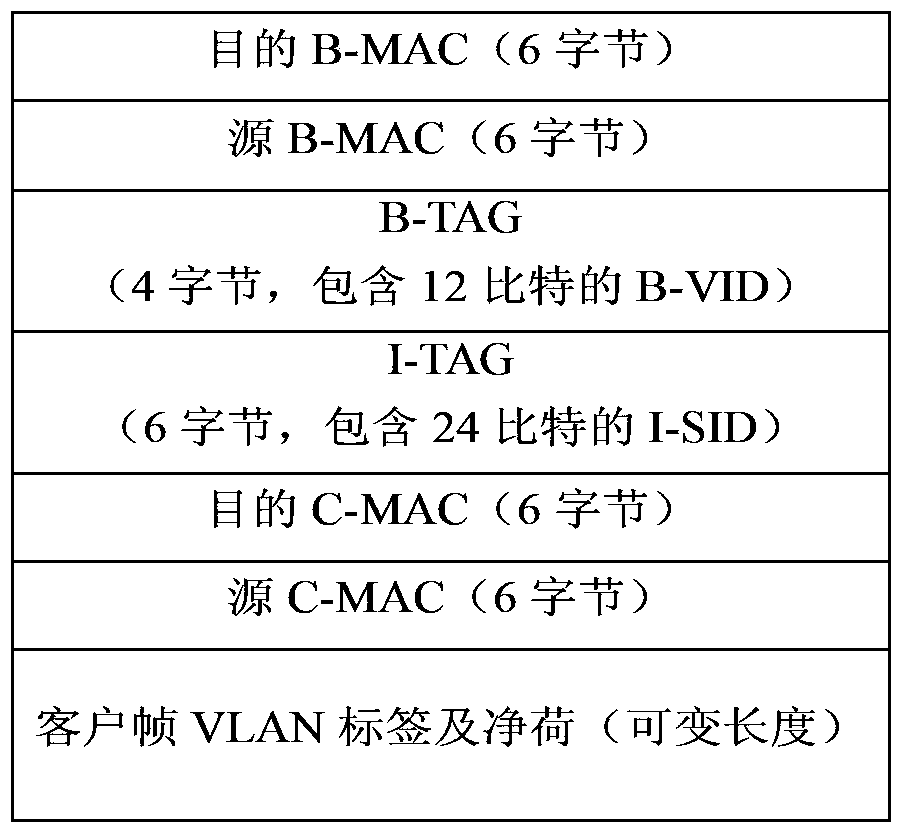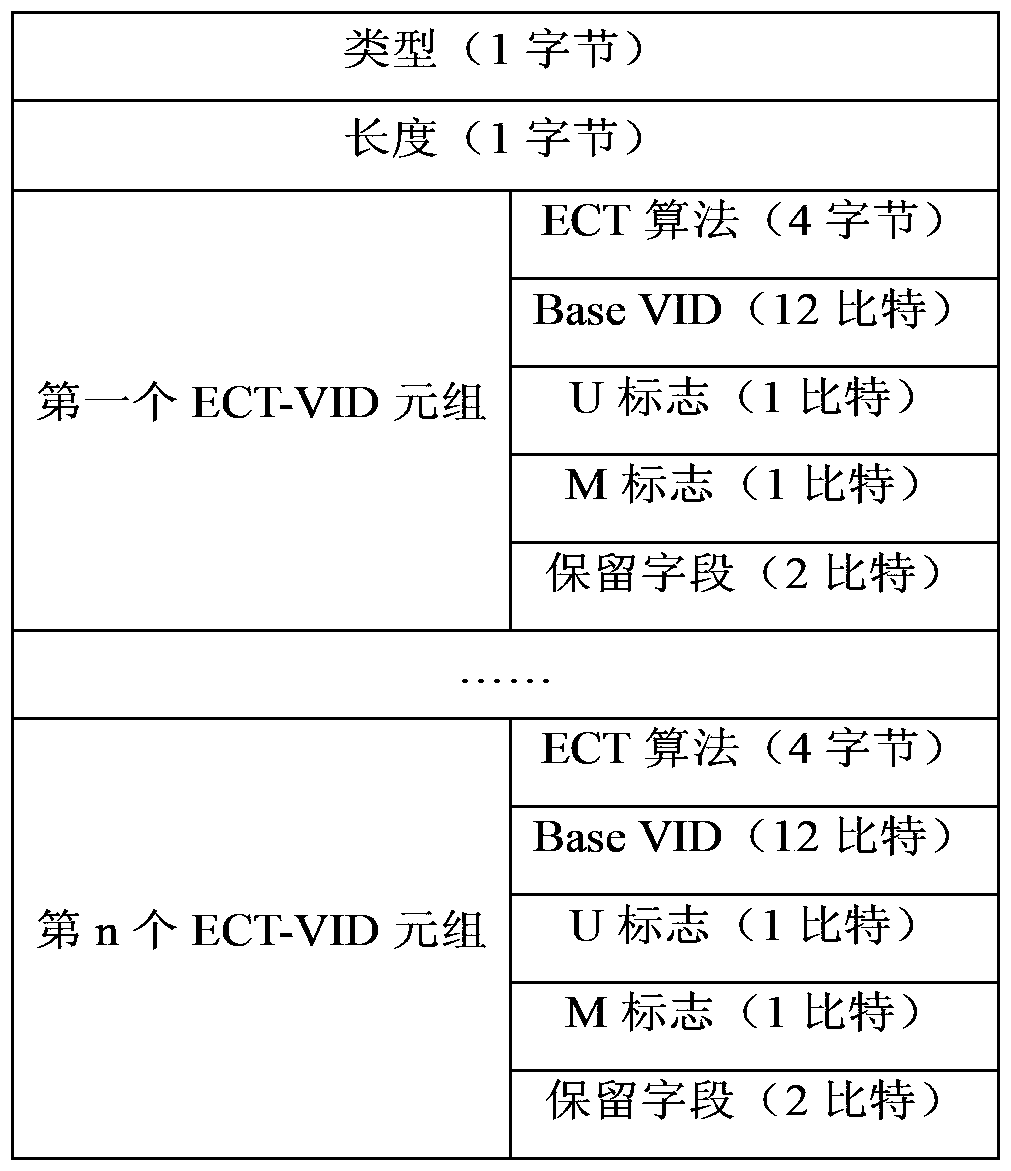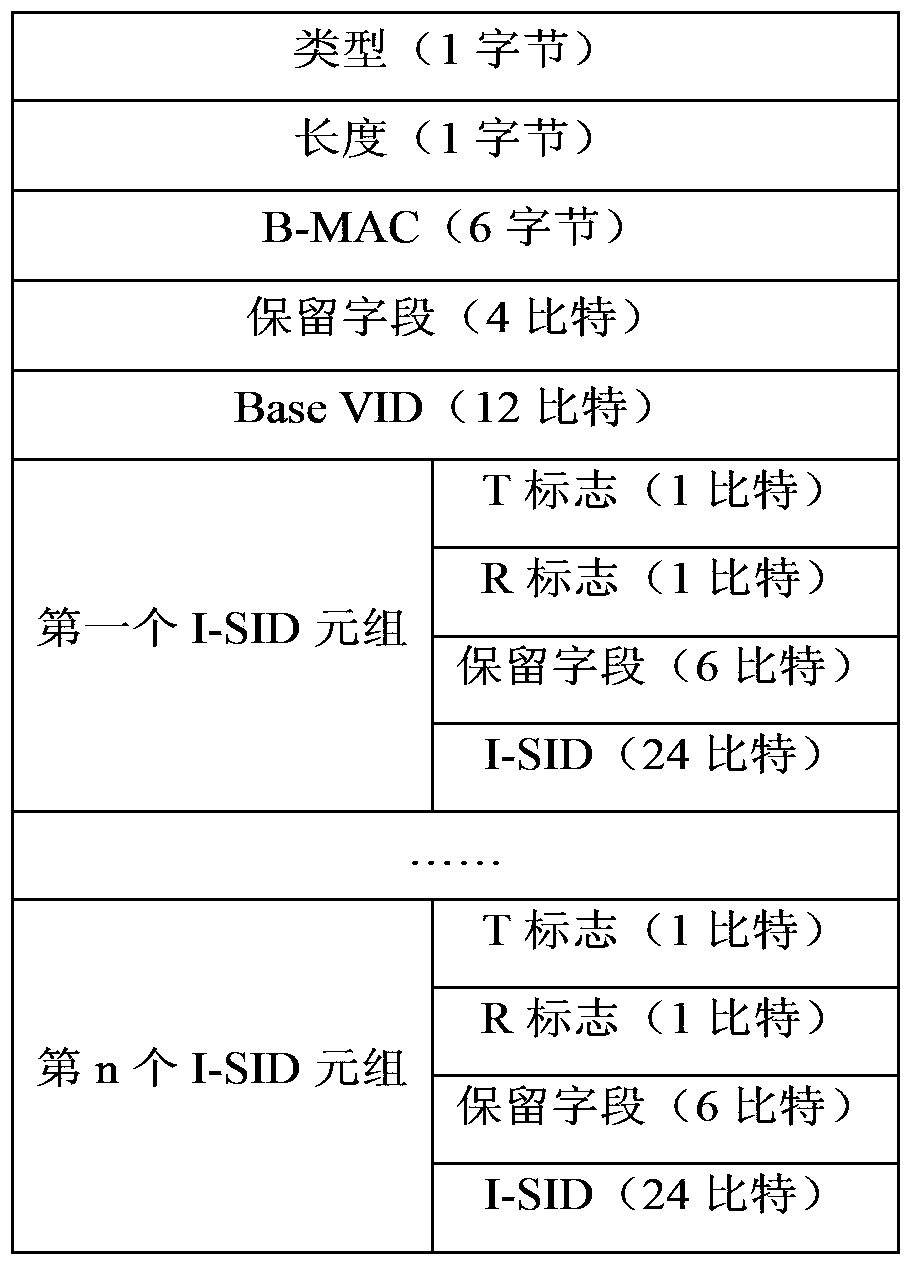Method and device for multi-homing access to shortest path bridging network
A technology of shortest path bridging and networking, which is applied in the field of communication, and can solve problems such as complex implementation of multi-homing access shortest path bridging network
- Summary
- Abstract
- Description
- Claims
- Application Information
AI Technical Summary
Problems solved by technology
Method used
Image
Examples
Embodiment approach 1
[0074] In this preferred embodiment, the local client-side device 1 uses the cross-node link aggregation technology to dual-home to the SPBM network through the network edge node 1 and the network edge node 2, and the remote client-side device 2 uses the cross-node link aggregation technology to dual-home to the SPBM network. technology, dual-homing access to the SPBM network through network edge node 3 and network edge node 4. Assume that all nodes in the network are configured with the same pair (BaseVID, ECT algorithm), where the value of BaseVID is 10, and the value of ECT algorithm is ECT algorithm 1.
[0075] Such as Figure 11 Shown is a schematic diagram of a network scenario of dual-homing at the local end and dual-homing at the remote end in this preferred embodiment 1. The notification and processing process of each network node in this preferred embodiment may include the following steps:
[0076] Step S1: The network edge nodes 1 and 2 including the port of the c...
Embodiment approach 2
[0083] In this preferred embodiment, the local client-side device 1 utilizes the cross-node link aggregation technology to dual-home to the SPBM network through the network edge node 1 and the network edge node 2, and the remote client-side device 2 uses the network edge node 3 to single It is connected to the SPBM network. Assume that all nodes in the network are configured with the same pair (Base VID, ECT algorithm), the value of Base VID is 10, and the value of ECT algorithm is ECT algorithm 1.
[0084] Such as Figure 12 Shown is a schematic diagram of a network scenario of dual-homing at the local end and single-homing at the remote end in this preferred embodiment. The notification and processing process of each network node in this preferred embodiment mainly includes the following steps:
[0085]Step S1: The network edge nodes 1 and 2 including the port of the cross-node LAG (LAG1) notify the B-MAC1 corresponding to LAG1 to the outside, and at the same time notify th...
PUM
 Login to View More
Login to View More Abstract
Description
Claims
Application Information
 Login to View More
Login to View More - R&D
- Intellectual Property
- Life Sciences
- Materials
- Tech Scout
- Unparalleled Data Quality
- Higher Quality Content
- 60% Fewer Hallucinations
Browse by: Latest US Patents, China's latest patents, Technical Efficacy Thesaurus, Application Domain, Technology Topic, Popular Technical Reports.
© 2025 PatSnap. All rights reserved.Legal|Privacy policy|Modern Slavery Act Transparency Statement|Sitemap|About US| Contact US: help@patsnap.com



